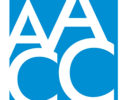Report roundup
By AACC 21st Century Center Staff
December 24, 2020
A monthly roundup of reports of interest to the community college sector.
Here are three reports to check out this month.
- New data focusing on transfer from National Student Clearinghouse (NSC) Research Center show further evidence of the pandemic’s disproportionate impact on community college students. Community college transfers to four-year institutions were down 10.1%. And the general dampening of student mobility is seen in all transfer pathways. Reverse transfers from four-year to two-year institutions decreased the most, by more than five times the pre-pandemic rate of decline (-19.4% vs. -3.6%). Lateral transfers decreased four times more than the pre-pandemic rate of decline (-12.6% vs. -3.1%). In addition, transfer enrollment dropped significantly for Black and Hispanic students enrolling in a community college this fall (-22.5% and -20.4%, respectively).
- In other data from NSC: Fewer high school graduates attended college this fall. There was a 30% drop among high school grads who enrolled in community colleges this fall, with a staggering 37% fewer students from low-income high schools. This reveals impediments to college access during the pandemic, NSC said. For example, there is an overall -29.2% drop in college enrollment among graduates of low-income high schools versus -16.9% at higher-income high schools
- Students who received Pell grants for short-term training programs were more likely to enroll at a postsecondary institution and complete a program, according to a new report from the U.S. Education Department (ED). In 2011, ED launched two pilot tests focused on expanding Pell Grant eligibility. One pilot program offered Pell grants for very short-term training programs – those lasting 8 to 15 weeks. Students who were offered a Pell grant to pay for one of these training programs were 15 percentage points more likely to enroll in additional education at one of the 28 pilot schools than students who did not receive the offer – 66% enrolled within 8 months vs. 52%. In terms of completion, 47% of the students offered an experimental Pell grant completed a program within 10 months, compared to 38% of those not offered these funds. They also were more likely to complete programs in high demand in their states.



